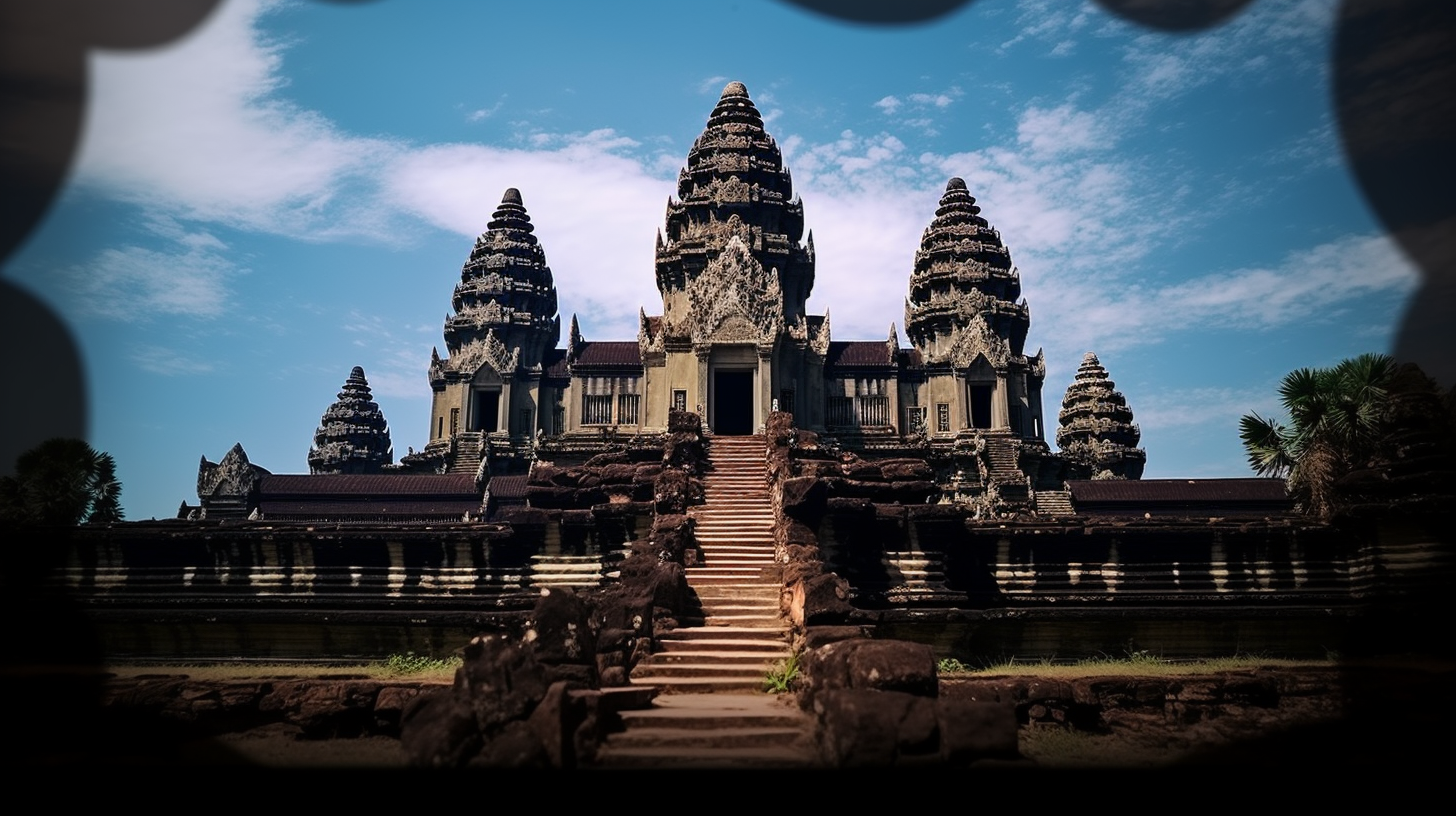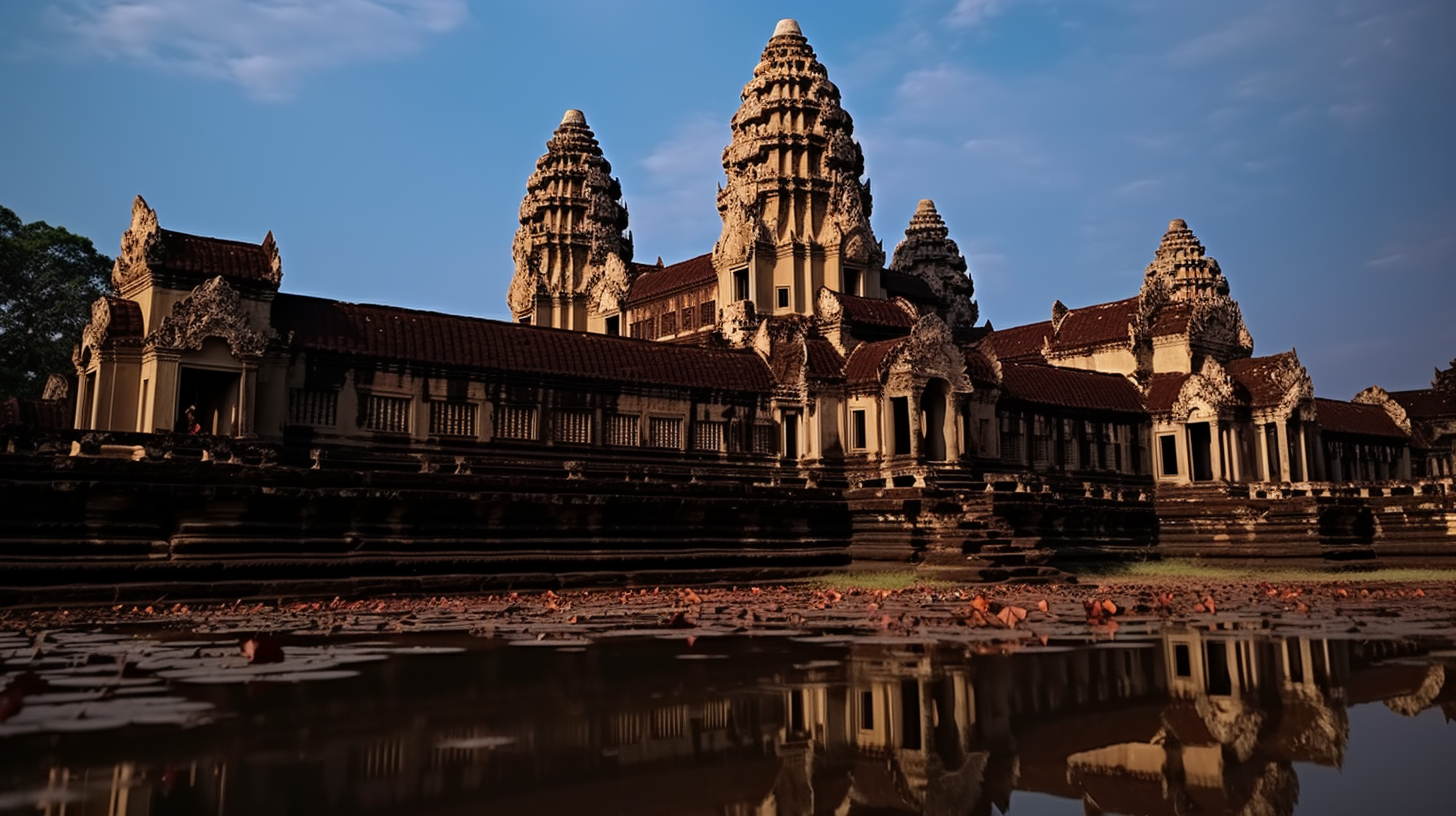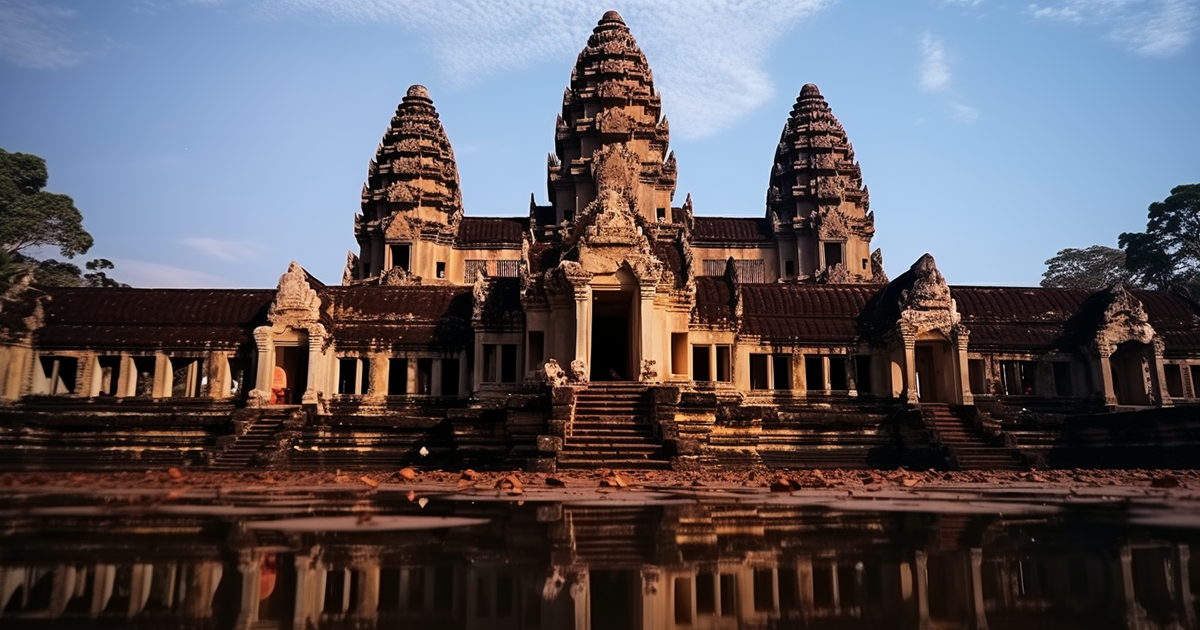Located deep within Cambodia, on the fringes of Siem Reap, rises Angkor Wat – a colossal structure that has mesmerized historians, archaeologists, and mythologists for centuries. This expansive temple complex, spanning nearly a mile on all sides, has never ceased to captivate and inspire awe.
While conventional wisdom among archaeologists places its origins in the 12th century A.D., Cambodian folklore traces its roots back even further, to 600 B.C.
The tales spun by locals suggest that Angkor Wat was not merely the product of human hands but was rather forged by a being that straddled the realms of man and deity.
Legend has it that Priya Pisnakar, the architect’s mother, descended from a celestial realm beyond our own and yearned to reunite with her son in her ethereal abode. This narrative, enthralling though it may be, is but one of the many mysteries enveloping Angkor Wat.

In 1996, John Grigsby, a dedicated researcher and writer, chanced upon a remarkable alignment within Angkor Wat that has left experts and enthusiasts alike dumbfounded. Grigsby’s discovery exposed a striking correlation between Angkor Wat and the Draco constellation, so named for the Latin word for “dragon.”
By superimposing a map of the Draco constellation onto the layout of Angkor Wat, Grigsby illuminated how various structures within the temple complex perfectly corresponded with the primary stars of the Draco constellation.
The immediate question that arises is: what significance could this cosmic alignment hold? Why did the architects of Angkor Wat go to such great lengths to mirror the Draco constellation?
Some academics posit that this alignment could have served as a symbolic gesture, showcasing to the local population the celestial ancestry of their creators and mentors. Erecting a monumental structure mirroring their stellar origins would vividly communicate their extraterrestrial legacy.
The connection between Angkor Wat and the Draco constellation transcends just architectural correspondence. The temple showcases depictions of dragon-esque creatures, hinting at a deep affiliation between Angkor Wat and the Draco constellation. In South Asian customs, these creatures, known as nagas, carry profound symbolism.

Considered potent beings, shape-shifters, and bearers of wisdom and knowledge, these nagas may symbolize the inhabitants of the Draco constellation or advanced extraterrestrial entities.
Heightening the intrigue of this celestial correlation is that Angkor Wat is not the sole ancient site connected to Draco. Across the globe, in Ohio, the Native American Serpent Mound aligns directly with Draco.
Likewise, in ancient Egypt, the pyramids were carefully positioned so that the entrance aligned with the principal star of Draco, Alva Draconis, ensuring its visibility during the night. These alignments suggest the intriguing notion that the Draco constellation influenced the evolution of dragon folklore across various cultures.
The widespread prevalence of dragon myths worldwide has spurred speculation that these mythical beings might have been extraterrestrial visitors from a planet within the Draco constellation. This thought-provoking hypothesis proposes that ancient civilizations bore witness to their arrival, immortalizing them in their myths and legends.
Take a look at the video below:
As we delve into these ancient enigmas, we are prompted to ponder whether esoteric knowledge about our cosmic origins has always resided within humanity’s collective consciousness. Could it be that our fascination with celestial alignments and dragons echoes this ancient wisdom?
While unraveling the enigmas of Angkor Wat and its connection to the Draco constellation may prove challenging, it unquestionably stands as a testament to the enduring mystique of ancient puzzles that continue to captivate our imagination.
